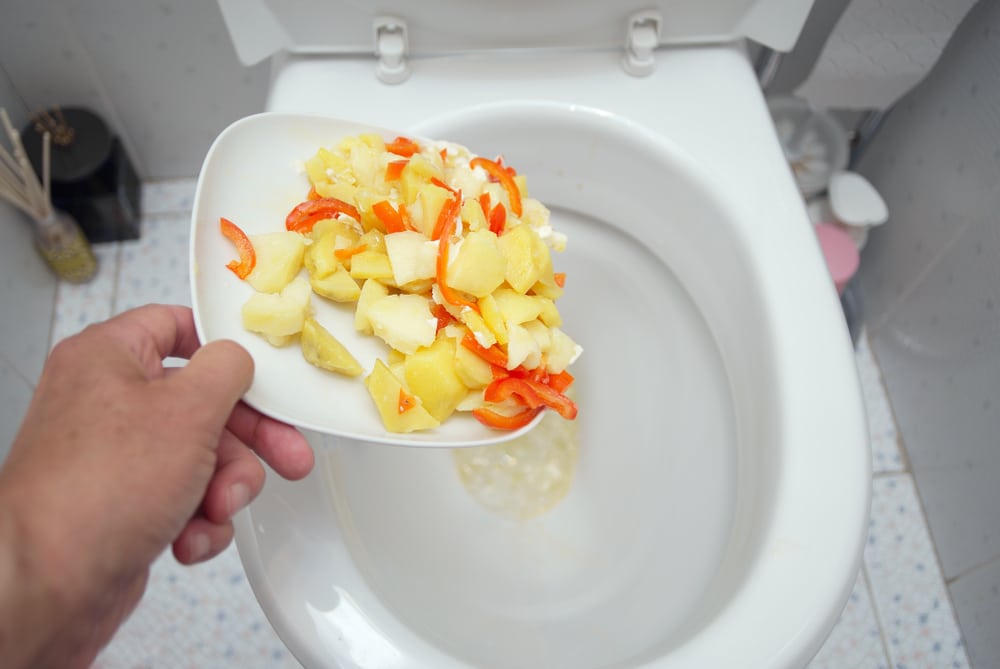Can One to Dispose of Food in the Toilet?
Can One to Dispose of Food in the Toilet?
Blog Article
What are your opinions about Flushing Food Down the Toilet??

Intro
Lots of people are commonly faced with the predicament of what to do with food waste, specifically when it involves leftovers or scraps. One common inquiry that occurs is whether it's okay to flush food down the commode. In this write-up, we'll explore the reasons why individuals may take into consideration flushing food, the effects of doing so, and alternative approaches for appropriate disposal.
Reasons why individuals may think about flushing food
Lack of understanding
Some people may not recognize the potential injury brought on by purging food down the commode. They might wrongly think that it's a safe technique.
Benefit
Purging food down the toilet may look like a quick and easy service to throwing away unwanted scraps, particularly when there's no neighboring garbage can offered.
Laziness
Sometimes, people may just select to flush food out of large laziness, without thinking about the consequences of their activities.
Effects of flushing food down the toilet
Ecological impact
Food waste that winds up in waterways can add to air pollution and damage marine environments. In addition, the water made use of to flush food can stress water sources.
Pipes problems
Flushing food can bring about clogged up pipes and drains, triggering expensive plumbing fixings and hassles.
Types of food that need to not be purged
Fibrous foods
Foods with fibrous textures such as celery or corn husks can obtain tangled in pipes and create clogs.
Starchy foods
Starchy foods like pasta and rice can soak up water and swell, resulting in obstructions in pipelines.
Oils and fats
Greasy foods like bacon or cooking oils must never be flushed down the bathroom as they can solidify and cause obstructions.
Proper disposal techniques for food waste
Using a garbage disposal
For homes geared up with garbage disposals, food scraps can be ground up and purged via the pipes system. Nevertheless, not all foods are suitable for disposal in this manner.
Recycling
Certain food packaging products can be reused, lowering waste and decreasing environmental influence.
Composting
Composting is a green way to throw away food waste. Organic materials can be composted and used to improve dirt for horticulture.
The importance of correct waste monitoring
Reducing environmental injury
Correct waste administration practices, such as composting and recycling, help reduce pollution and protect natural deposits for future generations.
Securing pipes systems
By staying clear of the technique of flushing food down the bathroom, homeowners can protect against pricey pipes fixings and maintain the stability of their plumbing systems.
Verdict
To conclude, while it might be appealing to purge food down the bathroom for comfort, it's important to understand the prospective effects of this action. By adopting appropriate waste monitoring practices and disposing of food waste properly, individuals can add to healthier plumbing systems and a cleaner atmosphere for all.
FLUSH FOOD DOWN THE TOILET?
FLUSHING FOOD CAN CAUSE BLOCKED DRAINS IN YOUR HOME
All of the plumbing fixtures in your home are connected to the same sewer pipe outside of your home. This outdoor sewer pipe is responsible for transporting all the wastewater from your home to the Council sewer mains. Even small pieces of food that go down the kitchen sink can cause problems for your sewer. It should therefore be obvious that flushing larger bits of food, such as meat, risks a clog in either the toilet itself or the sewer pipes. Flushing greasy food is even more problematic because oil coagulates when it cools, coating the interior lining of your pipes.
THE TOILET IS NOT A BIN
Food isn’t the only thing that people shouldn’t be flushing down the toilet. People use the toilet to dispose of all kinds of things such as tampons, makeup wipes, dental floss, kitty litter and even underwear. Water goes to great lengths to educate residents about the high costs and stress placed on wastewater treatment systems simply from people flushing the wrong stuff down the toilet. It costs taxpayers millions of dollars each year, and homeowners thousands in blocked drain repairs.
FLUSHING FOOD IS A WASTE OF WATER
Flushing food is a waste of our most precious resource - water. In June this year Level 1 water restrictions were introduced to protect water supply from drought conditions. Much of New South Wales continues to be affected by prolonged drought with recent figures revealing up to 97 per cent of the state remains in drought. Depending on whether you have a single or dual flush toilet, every single flush uses between five and 11 litres of water. In the current climate this is a huge amount of water to be wasting on flushing food that should be placed in the bin (or better yet, the compost).
https://www.jabplumbingsolutions.com.au/blog/can-you-flush-food-down-the-toilet

I was made aware of that report about Is it safe to flush food (especially rice) down the toilet? through a pal on our other website. So long as you enjoyed our blog posting plz consider to share it. Thanks so much for taking the time to read it.
Schedule A Free Estimate Report this page